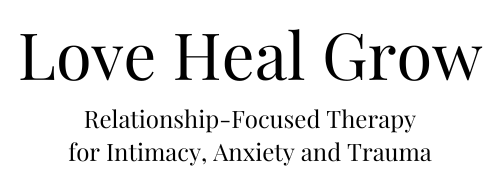
PTSD, or post-traumatic stress disorder, is a type of mental health condition that is triggered by a traumatizing event. The individual with PTSD could have been a part of the event or could have witnessed it. Not everyone who goes through a traumatic event will get PTSD, but individuals who are unable to recover from the traumatizing event and experience worsening symptoms over time are likely to be diagnosed with PTSD.
Some common symptoms of PTSD are flashbacks, nightmares, severe anxiety, and heightened reactions — such as being on edge or easily startled. According to the National Institute of Mental Health, to be diagnosed with PTSD, the individual must experience at least one re-experiencing and avoidance symptom and at least two reactivity and cognition symptoms for at least one month.
Common Misconceptions About PTSD
For many people, PTSD is not an unfamiliar term. However, even if people are familiar with the term PTSD, many people may have some misconceptions about what the condition is and how it affects an individual. PTSD is a condition that we often see represented in media — such as movies, TV shows, and novels — but for a lot of people, the understanding of what PTSD is ends with these portrayals. Unfortunately, many of these media portrayals are not accurate representations of what PTSD is like, and they can also perpetuate harmful misconceptions about the condition.
So, let’s dive into five of the most common misconceptions about PTSD and iron out what is and is not true about the condition.
1. Only Veterans Get PTSD
This misconception is perhaps the most commonly believed misconception about PTSD. The truth is PTSD can impact anyone who goes through a traumatic experience. Keep in mind this also applies to individuals who witness or have second-hand exposure to a traumatic event as well. While PTSD is often associated with individuals who have served in the military, this is simply because there is a high concentration of traumatic events when serving, given the inherently violent nature of the service.
However, trauma comes in a variety of formats, and people from all parts of the world and all kinds of lifestyles can get PTSD after a traumatic event in their lives.
2. Everyone with PTSD Has the Same Symptoms
As we mentioned before, in order to be diagnosed with PTSD, an individual must display a certain set of symptoms. However, how these symptoms are displayed can differ greatly from person to person. This means that while to have PTSD, an individual must have a certain selection of symptoms, the exact ways that these symptoms display themselves can differ depending on the individual.
To illustrate this, here are a few symptoms that fall into each of the four categories we mentioned above.
Re-experiencing
- Nightmares about the traumatic event
- Flashbacks to the event
- Intrusive and recurrent frightening thoughts
- Emotional distress or physical reactions in response to something that reminds the individual of the traumatic event
Avoidance
- Not talking about or thinking about the traumatic event
- Avoiding people, places, and activities that remind the individual of the traumatic event
Reactivity
- Feeling “on edge” or constantly tense
- Being easily startled
- Having insomnia or difficulty sleeping
- Experiencing outbursts of anger or strong emotions
- Having trouble concentrating
Cognition
- Hopelessness about the future
- Feeling negatively about yourself, others, or the world as a whole
- Having trouble remembering things, including important details about the traumatic event
- Lack of interest in activities the individual used to enjoy
- Feeling emotionally numb or exhausted
- Feeling detached or isolated from family and loved ones
- Finding difficulty in maintaining relationships with friends and family
- Feeling extremely guilty or shameful
3. PTSD Will Go Away with Time
A lot of people think that with enough time, PTSD will heal. Unfortunately, for the majority of people with PTSD, it simply will not go away on its own. Healing from PTSD takes a lot of time and work and typically requires the assistance of a mental health professional to process and overcome. Simply waiting for it to “be over” is not a realistic view of the healing journey that someone with PTSD may take.
People with PTSD Are Violent
This misconception largely comes from how the media portrays individuals with PTSD. The unfortunate truth is that if a TV show or movie wants to get a good story, there needs to be something more attention-grabbing than a person who is fearful, jumpy, and withdrawn. However, this is an extremely common reaction to PTSD, and more often than not, individuals with PTSD are not violent at all.
It is, of course, important to note that everyone reacts to traumatic events differently, and increased aggression can be a symptom of PTSD. This, however, does not mean that all people with PTSD are violent or aggressive.
4. Having PTSD or Getting Help for PTSD Is a Sign of Weakness
PTSD is a mental disorder, like anxiety or depression, that is diagnosable by a mental health professional. The condition actually alters the individual’s fear response and changes how the brain functions. It is not a sign of weakness. Individuals with PTSD experience symptoms and reactions that are not voluntary — they are the result of their brain’s trying to protect itself from the perceived danger.
On a similar thread, seeking support and guidance on how to best cope with and heal from PTSD should be viewed as a sign of strength rather than one of weakness. Wanting to work through the trauma takes a lot of courage, and the healing process is long and challenging. But, with the right support and enough time, people can overcome PTSD and move on with their lives. If you or someone you love may be suffering from PTSD, please do not hesitate to reach out to us at Love Heal Grow to get in touch with one of our therapists and get the support you need through this healing journey.























